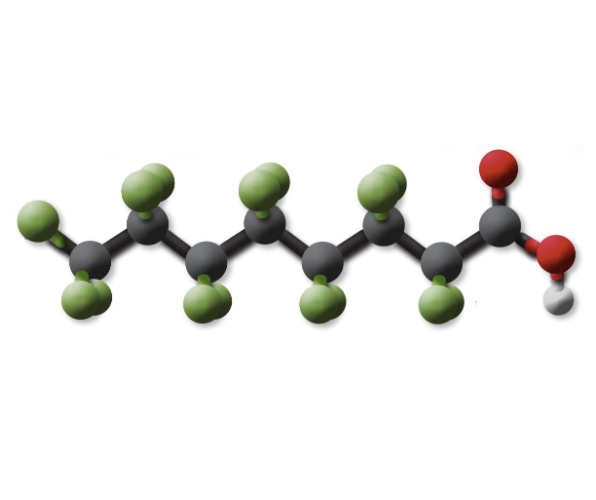Don’t drink the water. That’s what people from Flint, Mich., to a little New York town called Hoosick Falls have been hearing.
In Flint, it’s lead. We all know what that is. In Hoosick Falls, it’s perfluorooctanoic acid (PFOA). Never heard of it? Well, it’s probably in your kitchen or closet, and almost definitely in your body.
PFOA is a type of perfluoroalkyl acid (PFAA), a group of chemicals studied by Laura MacManus-Spencer. And PFAAs are used in everything from Gore-Tex clothing and Dupont’s StainMaster carpet to non-stick pans and coatings for microwave popcorn bags.
“PFAAs are everywhere in the environment. Every U.S resident has a measurable amount of PFAAs in their blood,” she said. “And literally every organism that scientists pluck out of the environment has these chemicals in their blood.”
“These chemicals are not known to be very acutely toxic (it won’t cause illness immediately), unless you’re exposed to really high concentrations,” MacManus-Spencer continued. “The concern is more that they are so persistent in the environment that they are going to be a problem for a long time, and we don’t yet know much about the effects of long-term, low-dose exposure.”
So she’s studying the way PFAAs interact with human serum albumin (HSA), the most abundant protein in the blood of most organisms. The work is supported by a grant from the National Science Foundation.
“Understanding how PFAAs interact with proteins helps us understand where PFAAs end up in the body and how long they stay there,” MacManus-Spencer said.
PFAAs are known to accumulate in the kidneys, liver and blood. And for PFOA, specifically, half the original concentration a person is exposed to will be gone from their body in about 4.5 years.
MacManus-Spencer acknowledges that there might be a concentration of PFAAs in the body that is safe and would not cause harm.
“The problem, however, is that because PFAA accumulate in people, there is probably not a safe level to ingest on a daily basis,” she said. “PFAAs exist in soil and water samples in concentrations on the order or parts per trillion, and in organisms in parts per billion – three orders of magnitude higher.”
But because acute toxicity appears low, MacManus-Spencer added, there’s no need to panic. She suggests instead that people focus on reducing their daily exposure to PFAAs as much as possible. Getting rid of that non-stick pan, for instance, would be a good start.
This approach won’t be as useful to the people of Hoosick Falls, however. They’ve been exposed to a much higher level of PFOA for an undetermined period of time. The source of the contamination is a plant owned by Saint-Gobain Performance Plastics, formerly by Honeywell International.
PFOA (and PFAAs in general) is used in the commercial production of Teflon, which was used in products made at the plant.
“In Hoosick Falls we see a population that’s suffering from abnormally high rates of aggressive thyroid cancer,” Andrew Glaser ’16 said. “PFOA exposure also causes liver toxicity, neonatal toxicity and kidney and testicular cancers.”
MacManus-Spencer is working to help members of this community, and also people in North Bennington, Vt. (their water also tested positive for PFOA). In May she and Andrew gave a seminar about the chemical at Bennington College, and she hopes to soon begin testing water from both communities.
Residents have had their water tested once, but this is akin to a single snapshot in time, MacManus-Spencer said. To get a more complete picture of the problem, she will partner with faculty at Bennington College to determine if PFOA concentrations change over time and at different locations on residents’ property.
MacManus-Spencer is also initiating a research project with Rensselaer Polytechnic Institute to determine the extent of the PFOA plume. That is, how far the contamination reaches in all directions. The researchers hope to do soil studies to discover how quickly the chemicals leach through the ground, as well.


